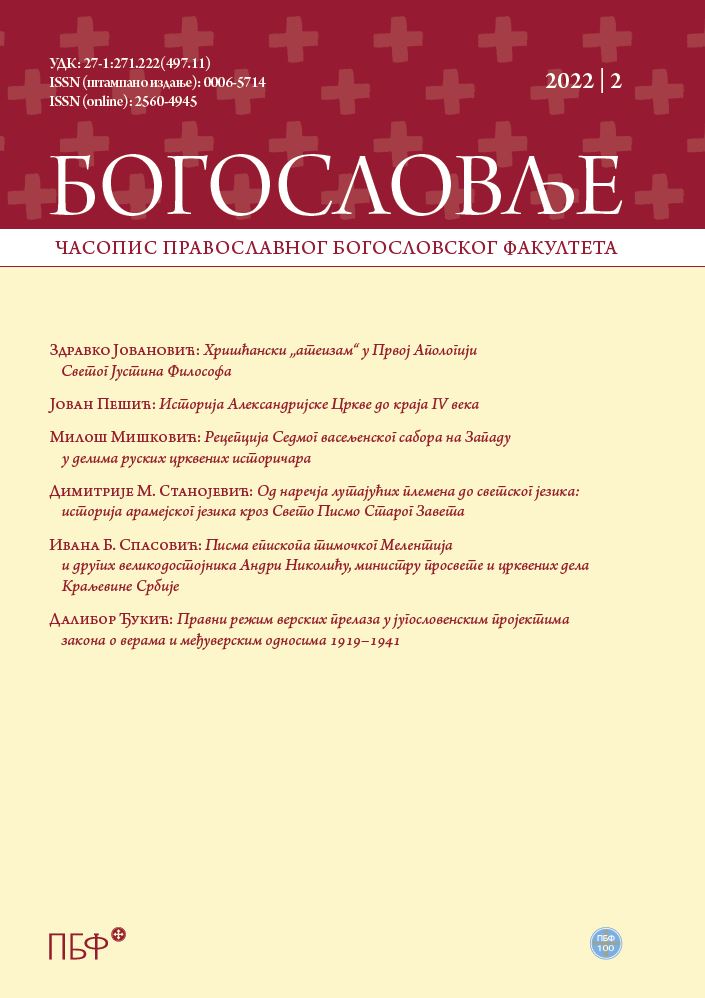Од наречја лутајућих племена до светског језика: историја арамејског језика кроз Свето Писмо Старог Завета
From the Dialect of the Wandering Aramean Tribes to the Common Language of Persia: The History of Aramaic Through the Old Testament
Author(s): Dimitrije StanojevićSubject(s): Language and Literature Studies, Theology and Religion
Published by: Православни богословски факултет Универзитета у Београду
Keywords: Biblical Aramaic; Biblical Language; Old Testament; Ezra; Daniel; Lingua Franca; the Tell-Halaf Inscription
Summary/Abstract: Aramaic language is an inevitable part of the Near Eastern heritage as a member of the Semitic language family. It represents a rich linguistic and cultural treasury not only for linguists but for historians as well. For the biblical research this language is of great importance because some parts of the Old Testament are written in this language like Ezra 4:8-6:18 and 7:12-26; Daniel 2:4-7:28, one sentence in Jeremiah 10:11 and two words in Genesis 31:47. Also, some Aramaic words found their way into the Gospels, even though they are transliterated with the Greek alphabet. This paper is concerned with the historical development of the Aramaic language as the context for the research of the before mentioned biblical passages. It follows the earliest dialect of this language among the wandering Aramean tribes and their connections with the Old Testament characters like the patriarchs Abraham, Isaac, and Jacob. Also, the organization of these tribes into the city-states and kingdoms is of special concern of this work because this gave rise to the Aramaic language to widely spread throughout the known boundaries of the Persian Kingdom as lingua franca – the common speaking language. The framework of this study is the period of the Old Testament up to the ascent of king Alexander the Great. It is concerned with historical events and circumstances that served in the advancement and flowering of the Aramaic language. Attention is given to the relations between the Arameans and their opponents, the significant kingdoms of Assyrians, Babylonians, and Persians. The Annals of these kingdoms are replete with references to Arameans and their incursions into the empire. The oldest inscription of the Aramaic language – the Tell-Halaf Inscription, inscribed on the sacrificial altar, from the Aramaic kingdom of Bit-Bahian is also studied in this paper.
Journal: БОГОСЛОВЉЕ
- Issue Year: 81/2022
- Issue No: 2
- Page Range: 57-74
- Page Count: 18
- Language: Serbian

